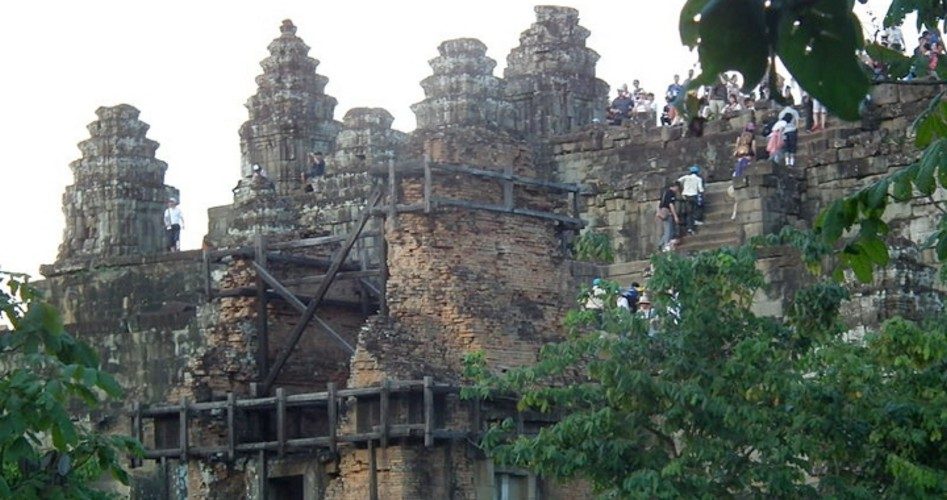
The U.S. government spent $5.6 million in 2011 to preserve historical sites, artifacts, and traditional arts — in foreign countries.
The money was distributed under the auspices of the U.S. Ambassadors Fund for Cultural Preservation. Created by Congress in 2000, “the Fund supports a wide range of projects to preserve cultural heritage, such as the restoration of historic buildings, assessment and conservation of museum collections, archaeological site preservation, documentation of vanishing traditional craft techniques, improved storage conditions for archives and manuscripts, and documentation of indigenous languages,” according to the State Department, which administers the program.
In the last 11 years the fund has disbursed nearly $33 million of American taxpayers’ hard-earned money to over 700 projects in more than 100 foreign countries. Washington’s willingness to send other people’s moolah overseas “shows the depth of our nation’s respect for the cultural heritage of other countries,” says the State Department. Tell that to the Iraqis, whose national museum was looted during the U.S. invasion in 2003, prompting three U.S. officials to resign in protest over their government’s failure to secure the museum.
Last year, U.S. ambassadors in more than 80 countries applied for grants from the fund for projects in the countries in which they were stationed. Ultimately, 58 grants were approved at a total cost of $5,635,405.
The largest grant, $750,000, went to conserve the 16th-century Batashewala Mughal Tomb Complex in Delhi, India.
The second largest, $700,000, was for conservation of the ruins of the ninth-century city of Kilwa Kisiwani. According to CNSNews.com, “The ruins of the African city of Kilwa Kisiwani are located in Tanzania, on the coast of East Africa. During the Middle Ages, the sultans who ruled the city commanded trade along the African coast.”
Jordan received the third largest grant: $600,000 to conserve the first-century Temple of the Winged Lions at Petra. The State Department describes the project thus:
Prominently located on a slope overlooking the capital of the ancient Nabataean kingdom, and renowned for its large stone sphinxes which served as column capitals, the Temple of the Winged Lions is in a fragile state and poses serious danger to tourists. This project involves major stabilization, consolidation, and site conservation activities to protect the ancient remains and make the area safe and secure for visitors.
Other grants include:
$450,000 for conservation of the 10th-century Temple of Phnom Bakheng in Cambodia;
$119,052 for conservation of the 16th-century Santo Tomás Temple and Convent in Guatemala;
$100,000 for the preservation of a traditional 19th-century log house museum in Russia, part of a collection of old wooden buildings moved to Kizhi Island in Karelia by the Soviet government in the 1950s and 1960s;
$30,000 for the conservation of 17th-to-19th-century red-lacquered wooden devotional objects in a museum in Vietnam; and
$22,500 for the preservation of reel-to-reel recordings of chants, dances, and stories in Micronesia.
Undoubtedly many of these projects are worthwhile; a number of them take place at sites on the United Nations Education, Scientific, and Cultural Organization’s (UNESCO) World Heritage list. However, under the Constitution the U.S. government is not empowered to spend taxpayer dollars on cultural preservation projects, no matter how worthy, either at home or abroad. In addition, as with most other foreign aid, there is a good chance that much of the money disbursed by the Ambassadors Fund goes not to these projects but to the (frequently corrupt) governments of the countries in which the projects are located.
With programs like the Ambassadors Fund staring them in the face, isn’t it strange that politicians expressing a desire to rein in wasteful, unconstitutional federal spending are seldom able to find any?
Photo of Phnom Bakheng Temple in Cambodia


